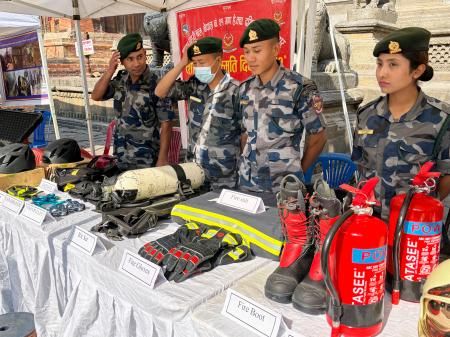Nepal Earthquake: Reconstruction and Reflection – A Decade of Progress and Challenges
Ten years after the devastating 2015 Nepal earthquake, the nation continues its journey of reconstruction and reflection. The 7.8 magnitude earthquake, and its subsequent aftershocks, claimed thousands of lives, leaving a trail of destruction that impacted millions. While significant progress has been made, the path to full recovery remains a complex and ongoing process. This article explores the key milestones, challenges, and lessons learned in Nepal's post-earthquake journey.
Reconstruction Efforts: A Decade of Progress
The immediate aftermath of the earthquake saw a massive international relief effort, providing crucial aid in search and rescue, medical assistance, and temporary shelter. However, the long-term reconstruction proved to be a monumental undertaking.
Key Achievements:
- Housing Reconstruction: The government's housing reconstruction program, while facing delays and bureaucratic hurdles, has made significant strides in rebuilding homes, particularly in rural areas. Millions of rupees have been disbursed, and countless homes have been rebuilt, incorporating improved building codes to withstand future seismic activity.
- Infrastructure Development: Roads, schools, and healthcare facilities have been rebuilt or upgraded in many affected regions. This has improved access to essential services and boosted local economies. The focus on earthquake-resistant infrastructure is a crucial aspect of this development.
- Community Engagement: Successful reconstruction efforts have highlighted the importance of community participation. Local knowledge and input have been instrumental in ensuring that rebuilt structures are culturally appropriate and meet the specific needs of the communities.
Lingering Challenges:
- Funding Gaps: Securing adequate and sustainable funding remains a major obstacle. Despite international aid, substantial financial resources are still needed to complete the reconstruction process.
- Bureaucratic Inefficiencies: Navigating bureaucratic processes has proven to be a significant challenge for many affected families and communities. Streamlining these processes is essential for accelerating reconstruction efforts.
- Capacity Building: Investing in the training and capacity building of local professionals in earthquake-resistant construction techniques is crucial for long-term resilience.
Reflection and Lessons Learned
The 2015 Nepal earthquake served as a stark reminder of the vulnerability of communities to natural disasters. The experience highlighted several critical lessons:
- The Importance of Building Codes: Strict enforcement of building codes and the adoption of earthquake-resistant construction techniques are paramount to minimizing future losses.
- Community Resilience: Strong communities, empowered to participate in the reconstruction process, are crucial for successful recovery.
- Early Warning Systems: Investing in robust early warning systems and disaster preparedness programs is crucial for saving lives and mitigating damage.
- Transparency and Accountability: Ensuring transparency and accountability in the allocation and use of funds is vital to building trust and ensuring the effective utilization of resources.
Moving Forward: Building a More Resilient Nepal
Nepal's journey of reconstruction and reflection is far from over. While significant progress has been made, continued efforts are essential to ensure the long-term resilience of the nation. This includes:
- Strengthening Disaster Preparedness: Implementing comprehensive disaster preparedness plans, including regular drills and community education programs.
- Investing in Infrastructure: Continuing to invest in earthquake-resistant infrastructure, focusing on schools, hospitals, and critical public services.
- Promoting Sustainable Development: Integrating disaster risk reduction into national development plans to ensure long-term sustainability.
The 2015 Nepal earthquake left an indelible mark on the nation. However, through determined reconstruction efforts, community resilience, and a commitment to learning from the past, Nepal is steadily building a more resilient and prosperous future. The road ahead remains challenging, but the progress made over the past decade offers hope for a stronger, more resilient Nepal.
Keywords: Nepal earthquake, 2015 Nepal earthquake, Nepal earthquake reconstruction, earthquake recovery, Nepal disaster relief, earthquake-resistant construction, disaster preparedness, Nepal resilience, building codes, community engagement.
